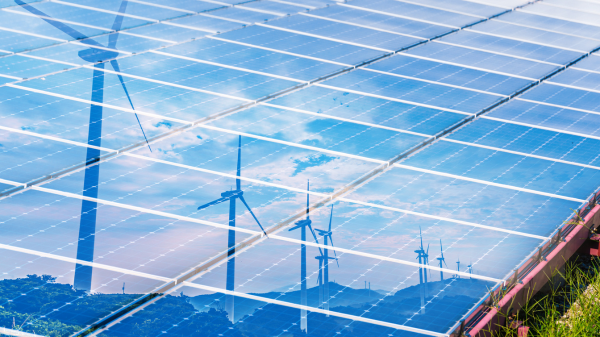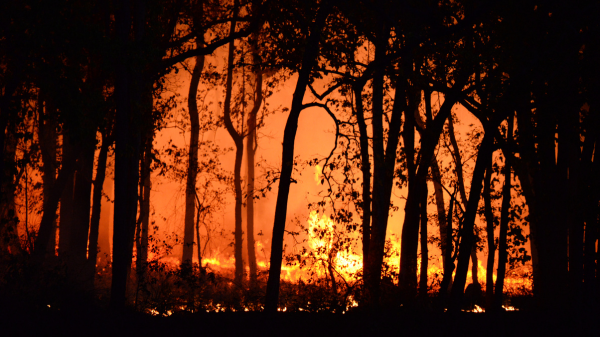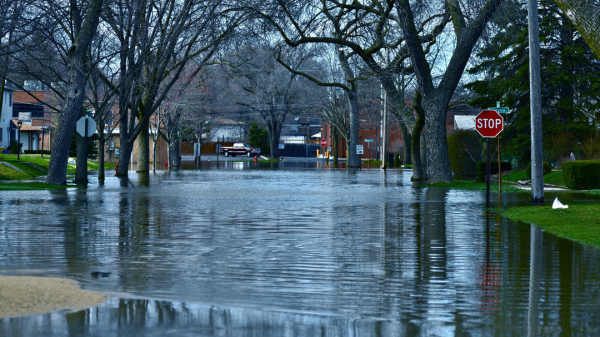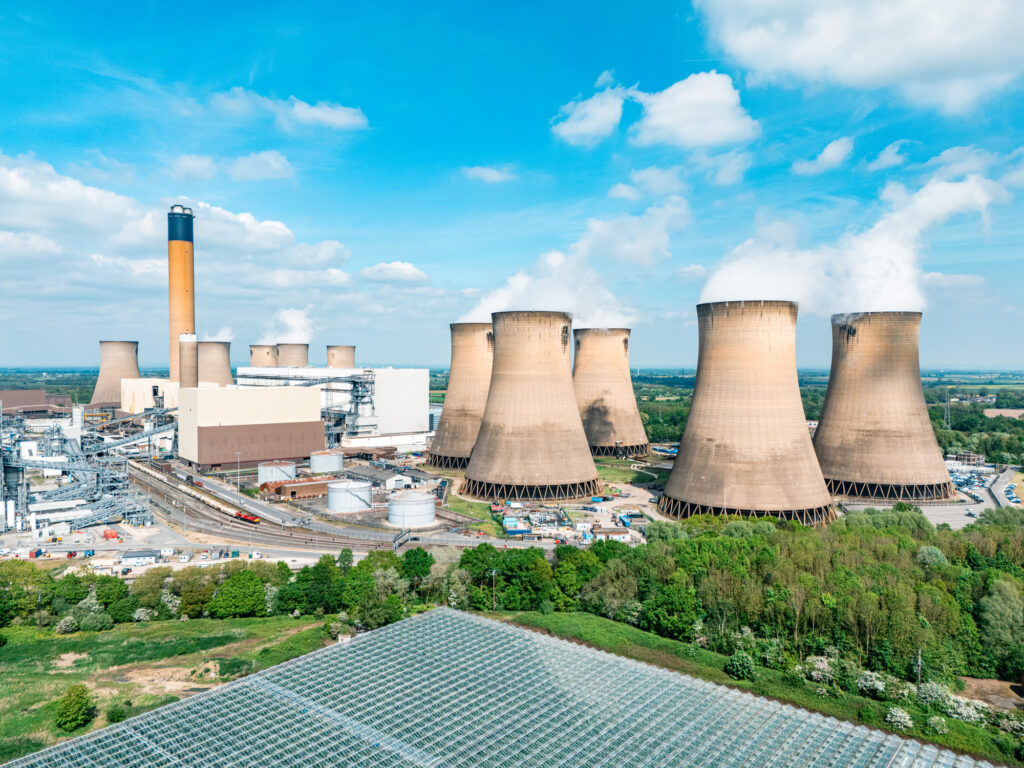IN THIS ISSUE:
- ‘Cheap’ Wind and Solar Raise Electricity Prices
- Climate Change Wildfire Role: Not Statistically Significant
- Modern Floods Are Hardly Historic, Flooding Was Much Greater During Past Periods

‘Cheap’ Wind and Solar Raise Electricity Prices
Multiple studies have demonstrated wind and solar power remain more expensive than historically traditional sources of electricity, such as coal, natural gas, nuclear, and hydropower, and Energy Information Administration data back that up—disproving claims by renewable energy profiteers and their lobbying groups. As coal plants have been prematurely retired and replaced by wind and solar, prices have risen and reliability has declined. The greater the forced (through renewable mandates) or incentivized (through subsidies, tax breaks, and tax credits) incursion of wind and solar into a state’s electric power supply, the higher and faster the costs rise.
I’m from Texas, and my electric power rates have risen faster than the national average, to where our rates are now above average. Just 10 to 15 years ago, Texas’ electricity rates were declining and well below the national average, with residents such as myself benefiting from some of the lowest costs in the nation. The recent price rise has been driven by the closure of large coal-fueled power plants, amounting to several thousands of megawatts of reliable power being taken offline, and the tremendous growth of “cheap” wind and solar power, faster here than in the rest of the nation. Texas now leads the United States in intermittent wind and is second in the nation for intermittent solar, all built upon favorable federal and state subsidy regimes.
My personal conclusions were confirmed in a study published in the journal Electricity in 2022, which found solar power to be the most expensive form of electric power on a Levelized Full Cost of System (LFSCOE) basis. That means the costs of providing electricity by a given generation technology, assuming that a particular market has to be supplied solely by this source of electricity plus storage. Solar power has been the fastest-growing source of electric power in Texas for the past few years, with a rush to build during the Biden presidency. With solar being the most expensive source of electric power on an LFSCOE basis, Texas has unsurprisingly moved among the fastest-rising electric power rates in the nation.
Evidence of wind and solar power’s deleterious impacts on retail electric rates can also be found in a new study published by the American Legislative Exchange Council (ALEC). ALEC has long fought for consumers, ratepayers, and sound science on climate change, battling nefarious efforts of utilities, climate lobbying groups, and virtue-signaling politicians to end or sharply limit the use of fossil fuels, especially coal, for electricity, and replace them with unreliable wind and solar. Politicians in particular have pushed climate alarm as a path to profit in terms of money and power.
ALEC’s study breaks down of all 50 states’ electric power situations: each state’s portfolio or a breakdown of its generating sources; climate rules and regulations that limit or require certain types of power; and the retail cost of electricity in every state, broken out by residential, commercial, industrial, and transportation uses; ending with a state-by-state comparison.
“Consumers pay higher prices for their electric utilities in states that have more regulations on their energy sector,” says a story in the Center Square describing the study’s bottom line.
“[T]he five states with the highest electricity prices implement stricter regulatory structures,” the Center Square reports. “‘All five of these states have in place Renewable Portfolio Standards and cap-and-trade programs,’ the report said. “Additionally, each of these states imposes a mandated net metering policy on its utilities, which is where utility companies pay consumers who generate electricity from rooftop solar panels for any excess electricity these panels push back onto the electric grid.”
The states with the cheapest and slowest-growing electric power prices do not have renewable power mandates, aren’t parties to intrastate or interstate carbon dioxide cap-and-trade schemes, and most don’t have mandatory net metering of solar power.
ALEC’s report reveals the top generating sources for electric power in a state also correlate highly to the state’s ranking on retail electric power prices. With the exception of Idaho, each of the five states with the lowest electric power prices gets most or the largest percentage of its electric power from coal generation. Idaho is the exception because it gets the largest percentage of its power from hydroelectric dams.
By contrast, four of the five states with the highest electric power prices have completely removed coal generation from their portfolios. Hawaii, an outlier because of its location, gets only 7 percent of its power from coal.
The data clearly implies that a state can have relatively cheap electric power, or it can have climate restrictions and high percentages of its electricity come from wind and solar, but it can’t have both. Embracing climate alarmism, adopting renewable portfolio mandates, implementing solar and wind financing schemes, and punishing fossil fuel use through cap-and-trade boondoggles or carbon taxes lead to higher electricity prices, and electric power prices have escalated as those programs’ requirements have become more stringent over time.
This isn’t rhetoric or a right-wing conspiracy or climate denial. These are the facts, grounded in real-world data.
Sources: Climate Change Dispatch; Energy at a Glance; The American Legislative Exchange Council; ScienceDirect: Energy

Climate Change Wildfire Role: Not Statistically Significant
Popular climate science blogger Sabine Hossenfelder, D.Phil., recently expressed outrage at a press release from the group World Weather Attribution (WWA) touting a science study it published claiming the recent wildfires in Los Angeles were made about 35 percent more likely by human-caused climate change.
Hossenfelder examined the study and determined the press release didn’t accurately express the findings of the study and that both the release and the study itself were misleading. It seems a careful review of the study shows the attributed causal connection between the climate change and the wildfire was “statistically insignificant,” meaning it was within the margin of error or the background noise contained in the numbers. There was no clear evidence climate change made Los Angeles’ recent wildfire more likely or contributed to it at all, despite the best efforts of WWA to gloss over the data.
After Hossenfelder posted a video lambasting the study, she raised this point with the authors, prompting one of them to admit to the problems she found, stating, “as you can see from the numbers, the changes in intensity and likelihood are unsurprisingly not statistically significant.” The press release covering the study asserted a clear connection, but in addition to the study finding a lack of evidence that climate change was a driver of the recent tragic fires, at least one author admitted that fact was “unsurprising.”
Hossenfelder commented harshly on the press release, the study itself, and the media’s coverage of it, saying the work “is so bad that I have sincere doubts that even the authors read it.” Wondering why other scientists don’t complain, she notes, “Whenever there is some crap going around the media, they look away and keep their mouths shut.”
Climate Realism had previously debunked claims the recent L.A. wildfires were caused by climate change, here and here, pointing out that the previous years’ wet conditions contributed to the buildup of lush, brushy growth which, when a dry year came, dried out and provided fuel for the fires. After the fires broke out (or were intentionally set, as the case may be), the well-known Santa Ana winds exacerbated them and hastened their spread.
Sources: The Daily Sceptic, Sabine Hossenfelder

Modern Floods Are Hardly Historic, Flooding Was Much Greater During Past Periods
Recent research published in the journal Climatic Change found that floods in Europe over the past few decades have not been unprecedented nor really all that exceptional, when compared to flooding in past centuries.
An international team of researchers from universities and research institutes in the United Kingdom, the Netherlands, and Spain recently examined paleo flood records to reconstruct, map, and account for extreme floods across Europe over the past several thousand years.
The study examined paleo-flood records, such as floodplain sediments, dating of sand grains, and past movement of boulders, for the Lower Rhine (Germany and Netherlands), the Upper Severn (UK), and rivers around Valencia (Spain). Among the results the research team found were,
- • In the Rhine, records for about 8,000 years show at least 12 floods likely to have exceeded modern peaks.
- • The Severn analysis shows floods in the last 72 years of monitoring are not exceptional in the context of paleo-flood records of the last 4,000 years.
- • The largest flood in the Upper Severn occurred in about 250 BCE and is estimated to have had a peak discharge 50 percent larger than the damaging floods in the year 2000.
“In recent years, floods around the world—including in Pakistan, Spain and Germany—have killed thousands of people and caused enormous damage,” professor Stephan Harrison, the lead author of the study, said in the press release announcing the study’s findings.
“Such floods are seen as ‘unprecedented’—but if you look back over the last few thousand years, that’s not the case. … In fact, floods we call unprecedented may be nowhere near the most extreme that have happened in the past,” said Harrison, a faculty member of the Department of Earth and Environmental Sciences at the University of Exeter’s Penryn Campus in Cornwall.
The research team stresses that understanding historic flood occurrences, both the periodicity and the peaks, is critical to properly plan for flooding in the future, in particular for housing and infrastructure intended to be resistant to and resilient in the face of a “one-in-200 year” or “one-in-400 year” flood event, regardless of climate change.
“If we rely on relatively short-term records, we can’t say what a ‘one-in-200 year’ flood is—and therefore our resilient infrastructure may not be so resilient after all,” said Mark Macklin, Ph.D., a coauthor of the study. “This has profound implications for flood planning and climate adaptation policy.”
Sources: EurekAlert; Climatic Change; Climate Change Dispatch



